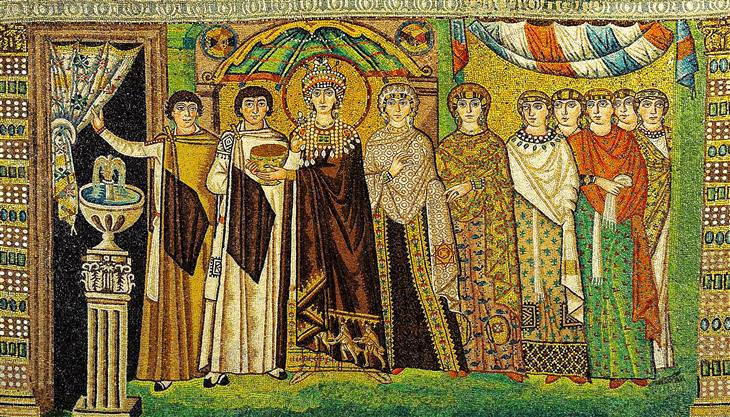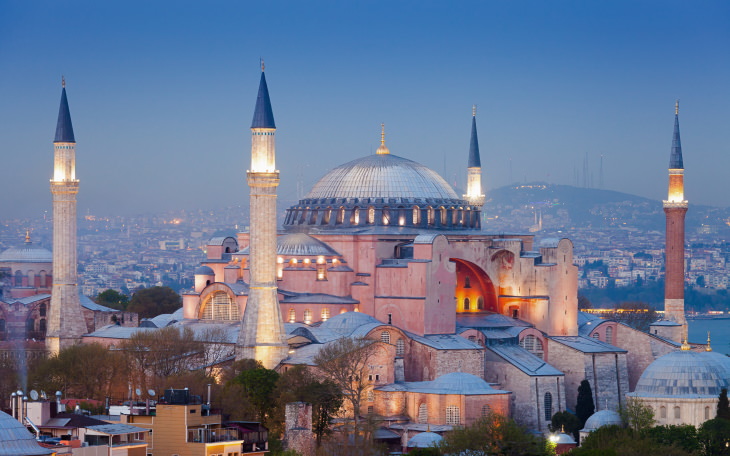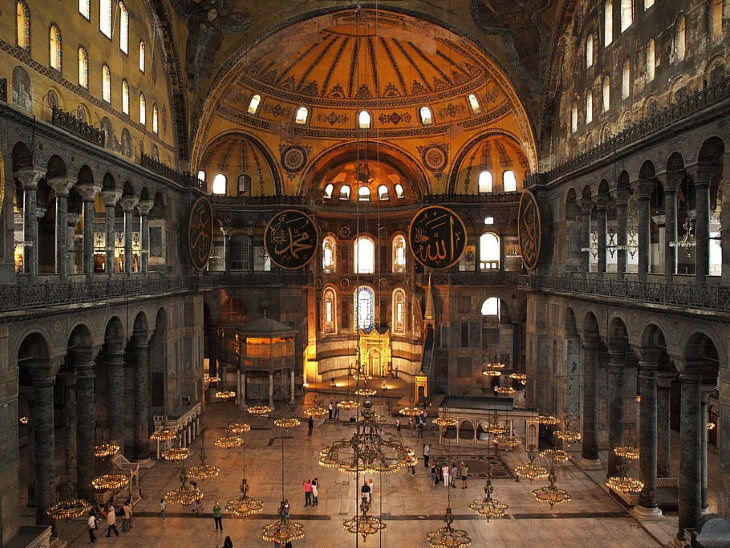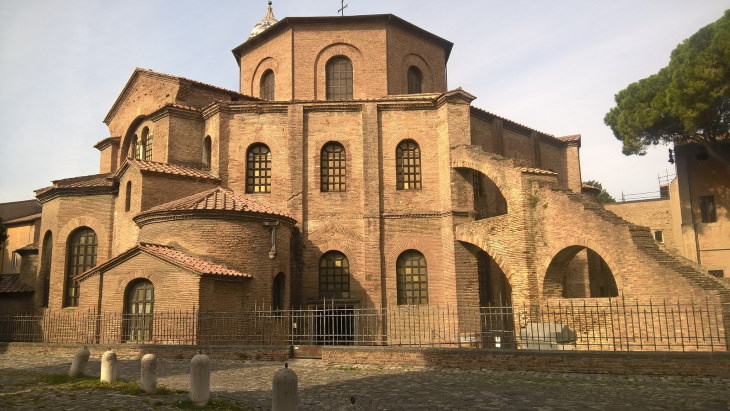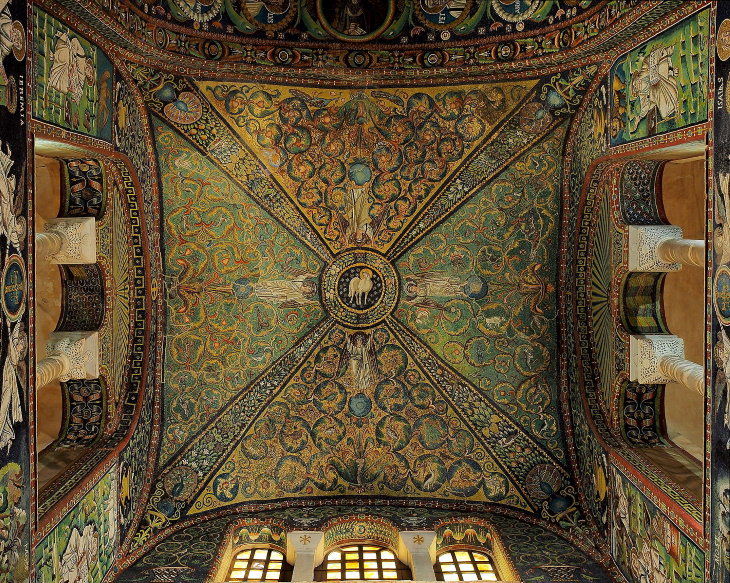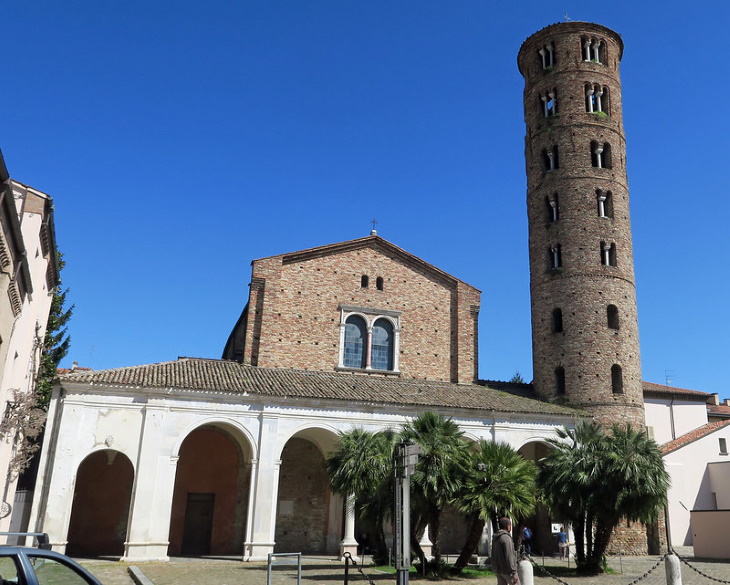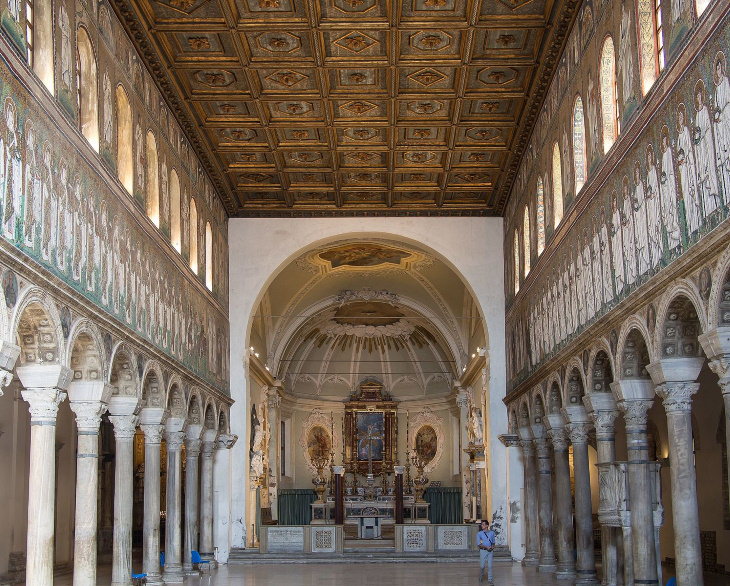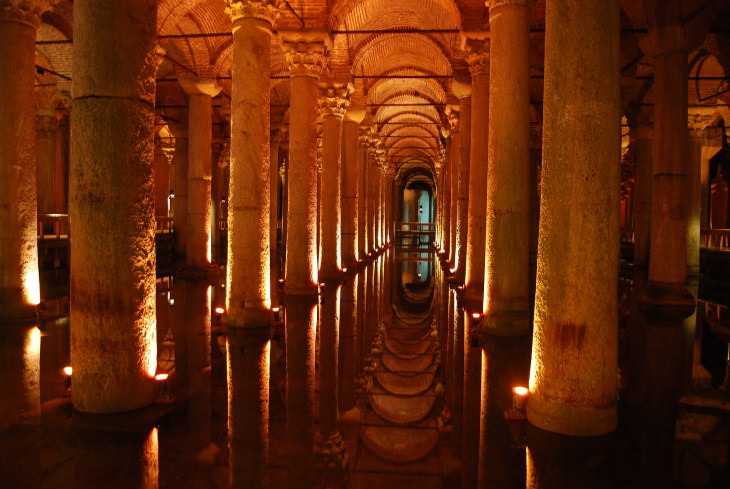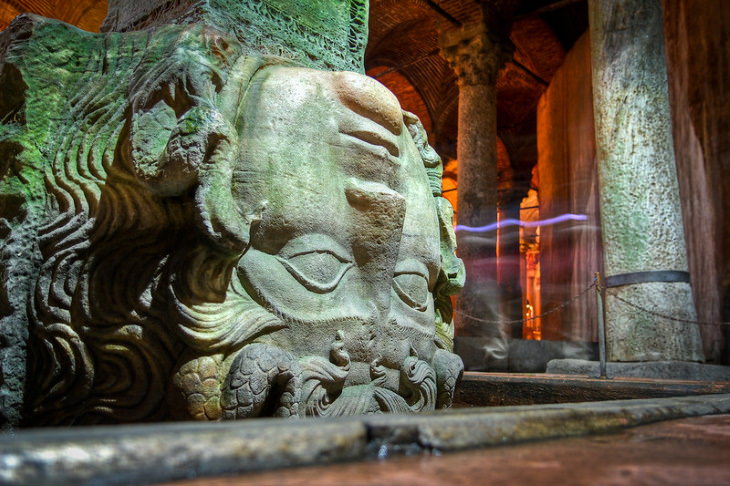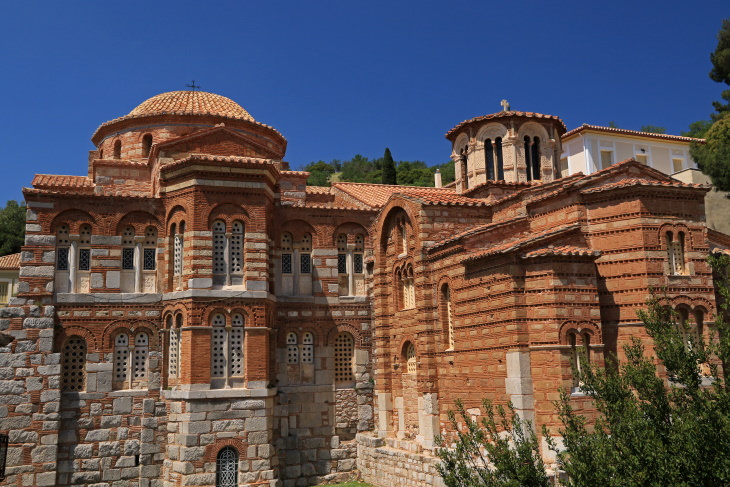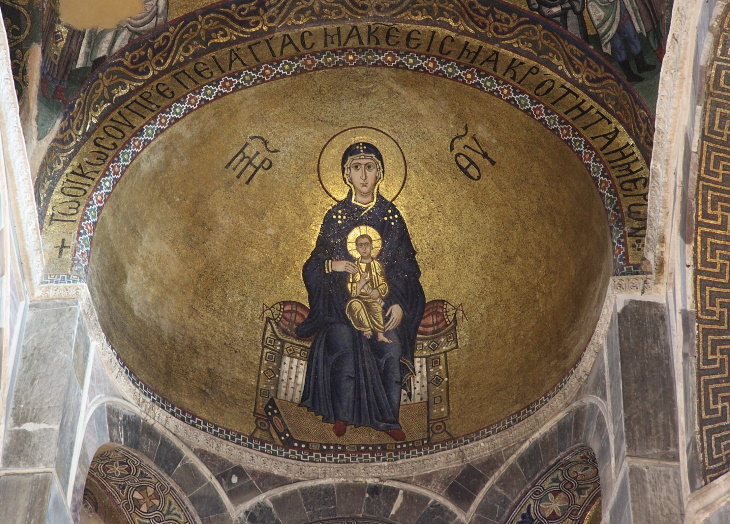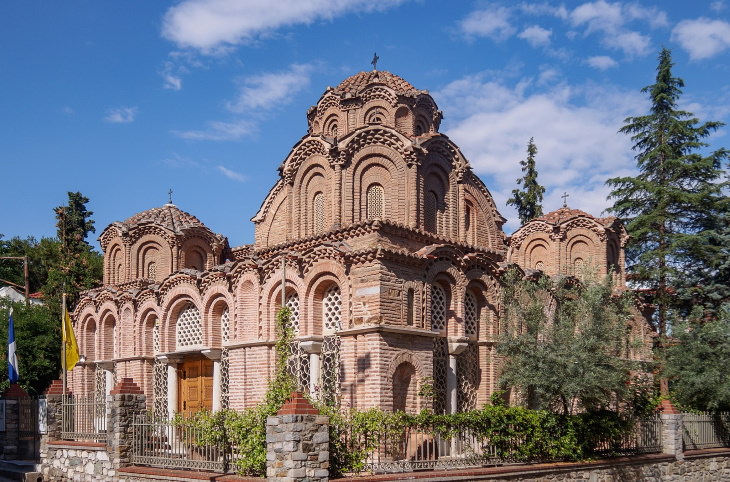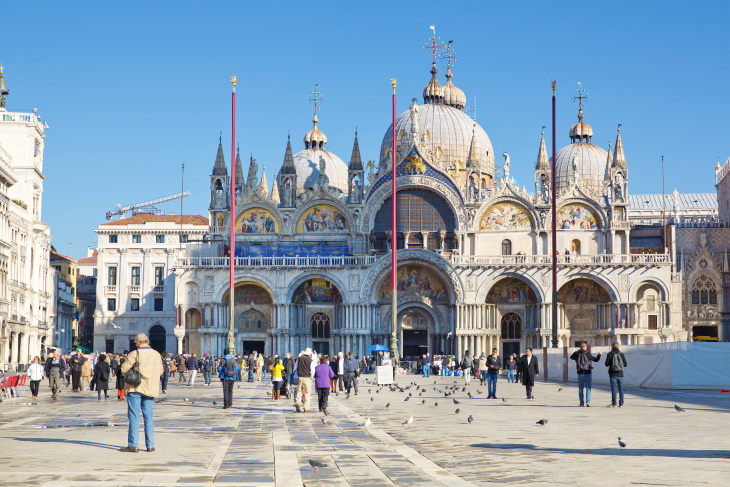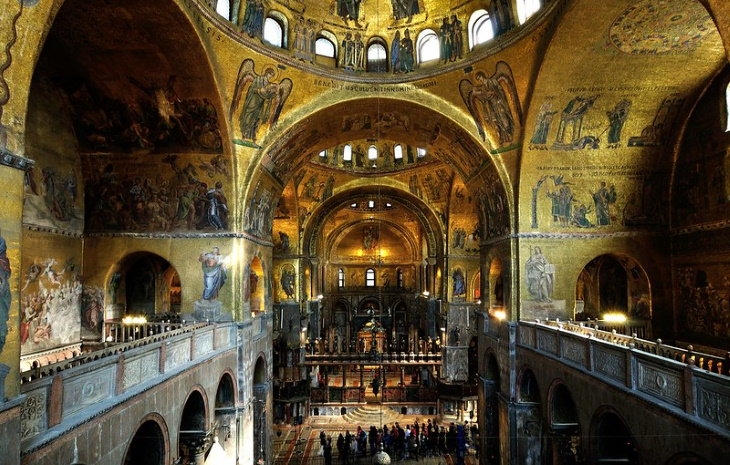What Is Byzantine Architecture?
Before we delve into Byzantine architecture, it’s important to clarify who the people behind the architecture were. The Byzantine Empire existed from the 5th century AD until 1453, and it is the remnant of the Roman Empire. Even though Byzantines and Romans were very similar, and Byzantine rulers even referred to themselves as Roman emperors, Byzantium was markedly different from the Roman Empire.
Unlike Ancient Romans, most Byzantines were Christian and spoke Greek. The capital of the empire was the city of Constantinople, in modern-day Istanbul, Turkey. Byzantine emperors commissioned extravagant churches - the bigger the better - and the architectural advancements of the time had already allowed it. When Emperor Justinian the Great united the Byzantine Empire and the territories of the Western Roman Empire in 540, he started building massive churches in both Constantinople and Ravenna, the former capital of the Western Roman Empire.
Justinian’s rule is considered to be the heyday of Byzantine architecture, but this style continued to dominate architecture in many parts of Europe until the fall of Constantinople in 1453 and even today. The most curious and outstanding feature of Byzantine architecture is its ability to combine Western and Middle Eastern architectural techniques.
The square-shaped church with a tall dome in the middle and rounded arches is the signature look of a Byzantine church, as exemplified by the Hagia Sophia, the most iconic Byzantine building. The interior of a Byzantine church is usually decorated with intricate and colorful mosaics and plenty of gold paint - another feature you’ll see in most Byzantine buildings. Let’s admire all of these features in 7 iconic and beautifully preserved Byzantine masterpieces.
1. Hagia Sophia - Istanbul, Turkey
The Hagia Sophia is the most iconic and spectacular example of Byzantine architecture. The grand basilica was built by Emperor Justinian I between 532 and 537, becoming the largest church in the entire world and the building with the highest dome. The interior of Hagia Sophia is even more impressive - the domes and the walls are covered with gold detailing and mosaics.
After the fall of Constantinople in 1453, it was converted into a mosque. Since then, the Ottoman rulers modified the building quite a bit - adding in four large stone minarets and multiple prayer halls. Still, the grand dome and interior decorations are still visible today. In the 20th century, the 1,500-year-old Hagia Sophia was turned into a public museum that functions to this day. So you can visit this astonishing structure even today.
2. Basilica of San Vitale - Ravenna, Italy
If you want to see Byzantine architecture in Europe, the city of Ravenna should be first on your list. As previously mentioned, Justinian I reconquered Ravenna and parts of Italy from the Ostrogoths, Germanic tribes who had conquered the Western Roman Empire in the 4th century AD. To claim ownership of Italy, Justinian spent a lot of the wealth generated by his conquests to build churches.
The Basilica of San Vitale was one of those churches, but it is by far not the only example of Byzantine architecture in Ravenna. A UNESCO World Heritage Site, the basilica was completed in 547 AD and it has a collection of some of the most exquisite Byzantine mosaics. The Lamb of God mosaic pictured below, as well as the beautiful mosaic depicting Emperor Justinian's wife Theodora we featured at the beginning of this article, are just a few examples of such mosaics.
3. Basilica of Sant' Apollinare Nuovo - Ravenna, Italy
The Basilica of Sant' Apollinare Nuovo is another must-visit Byzantine church in Ravenna, even if it doesn’t look like one from the outside. This is because the structure itself was built by the Ostrogoth king Theodoric the Great between 475 and 526 AD, so the basilica is actually a mixture of many different architectural styles.
Only a few decades after the completion of the church, Justinian I converted the basilica into an Orthodox church in 561 AD and sent Byzantine craftsmen to decorate the walls with mosaics depicting various landmarks of Ravenna and scenes from the Bible. These mosaics are so impeccably preserved that this basilica too was proclaimed a UNESCO World Heritage Site.
4. Basilica Cistern - Istanbul, Turkey
Not all Byzantine architecture is gleaming with gold and seen from miles and miles. In fact, you could easily pass by the Basilica Cistern - or rather, above it - without ever noticing. This is because the Basilica Cistern is located underground. The building is a huge underground water storage tank and a rare example of Byzantine urban planning. This cistern was named ‘the Basilica Cistern’ because it’s located near an old basilica, and it too was commissioned by Justinian I.
The cistern was built to supply the entire city, including Justinian’s residence, with water. The space is able to hold 2,800,000 cubic feet of water, which is about 32 Olympic-size swimming pools. Today, the cistern is a popular tourist destination, as the 336 massive marble columns, many of which feature decorative carvings and medusa heads are quite an impressive sight!
5. Hosios Loukas - Distomo, Greece
Hosios Loukas is a grand 10th-century monastery atop Mount Helicon in Greece. It’s one of the most prominent examples of Middle Byzantine architecture, also known as the Second Golden Age and the Macedonian Renaissance. Between the 9th and 11th centuries, the Macedonian dynasty - which invested a lot in arts - ruled over the Byzantine Empire.
The Hosios Loukas monastery and the adjacent Katholikon church are among the most impressive examples of architecture from this era. Inside the monastery, visitors will find plenty of fine marblework, mosaics, and frescoes. The monastery is a UNESCO World Heritage Site since 1990.
6. The Church of Saint Catherine - Thessaloniki, Greece
Located in the Thermaic Gulf of the Aegean Sea, the city of Thessaloniki is a thriving port city in Greece, as well as a popular tourist destination. What most tourists miss as they relax on the beach is all the complicated history of the city, which was under Roman, Byzantine, and Ottoman rule. The city is home to one of the most well-preserved Byzantine churches - The Church of Saint Catherine - located in the old town of Thessaloniki.
The church was built between 1261 and 1453, right before the downfall of the Byzantine Empire, which is why it actually served as a mosque for much of its existence. This landmark is one of two Byzantine UNESCO World Heritage Sites in Thessaloniki. The second one is the only surviving Byzantine bath in Greece, which is also definitely worth a visit.
7. St. Mark’s Basilica - Venice, Italy Title
Are you surprised to see the iconic St. Mark’s Basilica of Venice on this list? While the exterior of the basilica may not be the most traditional example of Byzantine architecture, you see the Byzantine inspiration the second you enter the famous church. Located on Piazza San Marco, the Patriarchal Cathedral Basilica of St. Mark was completed in the year 1092, and it’s a one-of-a-kind example of Byzantine architecture.
The beautiful basilica is one of the rare examples of Italo-Byzantine architecture, which is essentially an Italian twist of the Byzantine aesthetic. The lavish interior design of St. Mark’s Basilica earned the church its nickname - Chiesa d’Oro, or the “church of gold.” If you notice a resemblance of the interior decorations to that of the Hagia Sophia, you’re not wrong. The interior was indeed modeled from the Hagia Sophia, and some of the artifacts in St. Mark’s Basilica are actually from the Hagia Sophia.
Share these stunning landmarks with family and friends!

